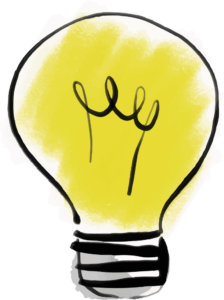 What exactly is a “healthy diet?” According to the World Health Organization (WHO), there are six primary components of healthy diet, all of which are essential to an optimally functioning body: vitamins, minerals, proteins, fats, carbohydrates, and water.2-4
What exactly is a “healthy diet?” According to the World Health Organization (WHO), there are six primary components of healthy diet, all of which are essential to an optimally functioning body: vitamins, minerals, proteins, fats, carbohydrates, and water.2-4
MICRONUTRIENTS VS. MACRONUTRIENTS
Micronutrients include vitamins and minerals. Although the body only needs trace amounts of them, deficiencies in them can cause ill health.3
Macronutrients include water, protein, carbohydrates, and fats. These essential nutrients are needed in larger quantities.
THE MICRONUTRIENTS
Vitamins. are organic compounds, meaning they come from plants or animals, and are needed in small quantities to sustain life. The human body obtains most of them from outside sources because either the body does not produce enough of them or the body does not produce them at all.5 There are 13 known vitamins, each of which play an important role in the body (see table on following page). These are separated into two categories—water-soluble and fat-soluble—and are sourced from the food you eat, including fruits, vegetables, and grains.
Minerals. like vitamins, are essential for life but are inorganic elements, meaning they come from the earth, soil, or water, and are absorbed by plants. There are hundreds of minerals in nature, but only some are essential to human health.6,7 Minerals keep your bones, muscles, heart, and brain working properly and create enzymes and hormones. Minerals are separated into two groups—macro and micro—and come from the food you eat, including meats, legumes, fruits and vegetables, and whole grains. Examples include sodium, magnesium, copper, and zinc.6
THE MACRONUTRIENTS
Proteins are the building blocks of the body.6-8 They are made up of amino acids, which are involved in almost every body function, including growth and healing, digestion, and providing energy for your body.3,9 Proteins can also be a last resort fuel source for cells. While meat and eggs are well-known good sources of protein, you can also get this essential nutrient from plant sources such as beans, soy, nuts, and some grains.7
Fats provide the body with energy and help it carry out a range of functions, including vitamin and mineral absorption, blood clotting, building cells, and muscle movement.3,6 Fats can be saturated, the less optimal source, or unsaturated, the ideal healthy choice. It is essential to consume healthy fats, such as monounsaturated and polyunsaturated fats, and limit or avoid saturated and trans fats.9 You can find these healthy fats in nuts, seeds, fish, and vegetable oils (like olive, avocado, and flaxseed).
Carbohydrates are key to providing your body with energy, protecting against disease, and managing weight. Carbohydrates are divided into three groups: sugars (simple), starches (complex), and fiber (another type of complex carb). Simple carbohydrates are broken down quickly by the body to use for energy. They occur naturally in plant-based foods, namely fruits, as well as in milk and milk-based products. Simple carbohydrates can also be found in highly processed foods, such as candy, soda, cakes, and cookies, in the form of added refined sugars, which provide little to no nutrition to the body. Complex carbohydrates (starches), on the other hand, must first be broken down into simple sugars before your body can use them for energy, which slows the digestion process of the sugar. This is why consuming complex carbs doesn’t cause blood sugar to immediately spike up and crash down the way refined sugars can. Good sources of complex carbs are whole grains, legumes, potatoes, corn, and peas. Fiber is also considered a complex carbohydrate, and is one of the reasons why the simple sugars found naturally in fruit are not bad for you the way refined sugars are. The fiber in fruits and vegetables cannot be broken down by your body. As it passes through the body undigested, it slows the digestion of the sugar, helping to maintain a steady blood sugar level. Fiber is found in many foods that come from plants, including fruits, vegetables, nuts, seeds, beans, and whole grains.11a,11
Water. You can survive weeks without food, but only days without water. In fact, your body is about 62 percent water.9 Water serves numerous roles in the human body: it acts as a building material, as a carrier for nutrients and waste products, as a lubricant, and as a shock absorber. It also keeps your body temperature regulated and improves brain function.7 Water should always be your primary source of hydration but can also be found in fruits and vegetables. Watermelon, strawberries, canteloupe, peaches, oranges, and lettuce are excellent sources of water.
Sources
1. A Brief History of USDA Food Guides. U.S. Department of Agriculture website. https://www.choosemyplate.gov/ eathealthy/brief-history-usda-food-guides. Accessed September 30, 2020.
2. Nutrients. World Health Organization website. https:// www.who.int/elena/nutrient/en/. Accessed September 30, 2020.
3. Fletcher J. What are the 6 essential nutrients? Medical News Today website. https://www.medicalnewstoday. com/articles/326132. Updated August 22, 2019. Accessed September 30, 2020.
4. Skerrett PJ, Willett WC. Essentials of healthy eating: a guide. J Midwifery Womens Health. 2010;55(6):492-501.
5. Brazier Y. What are vitamins, and how do they work? Medical News Today website. https://www. medicalnewstoday.com/articles/195878. Updated September 26, 2017. Accessed September 30, 2020.
6. Vitamins and Minerals. Harvard T.H. Chan School of Public Health website. https://www.hsph.harvard.edu/ nutritionsource/vitamins/. Accessed September 30, 2020.
7. Butler N. 6 Essential Nutrients and Why Your Body Needs Them. Healthline website. https://www.healthline.com/ health/food-nutrition/six-essential-nutrients. Updated September 3, 2020. Accessed September 30, 2020.
8. Santarpia L, Contaldo F, Pasanisi F. Dietary protein content for an optimal diet: a clinical view. J Cachexia Sarcopenia Muscle. 2017;8(3):345-348.
9. Carpenter K, Truswell AS, Kent-Jones DW, Weininger J. Human nutrition. Encyclopædia Britannica website. https://www.britannica.com/science/human-nutrition. Updated February 13, 2020. Accessed September 30, 2020.
10. Hall MB, Mertens DR. A 100-Year Review: Carbohydrates—Characterization, digestion, and utilization. Int J Dairy Sci. 2017;100(12): 10078-10093.
11. National Library of Medicine. Medline Plus. Carbohydrates. https://medlineplus.gov/carbohydrates. html. 16 Oct 2020.
12. Carbohydrates: how carbs fit into a healthy diet. Mayo Clinic website. https://www.mayoclinic.org/healthy- lifestyle/nutrition-and-healthy-eating/in-depth/ carbohydrates/art-20045705. Updated April 17, 2020. Accessed October 1, 2020.
13. Jéquier, E., Constant, F. Water as an essential nutrient: the physiological basis of hydration. Eur J Clin Nutr. 2010; 64:115–123.
14. Semba RD. The discovery of the vitamins. Int J Vitam Nutr Res. 2012;82(5):310-15.
15. Zimmer C. Learning From the History of Vitamins. The New York Times website. https://www.nytimes. com/2013/12/12/science/learning-from-the-history-of- vitamins.html. Updated December 12, 2013. Accessed October 1, 2020.
 DID YOU KNOW?
DID YOU KNOW?
Biochemist Casimir Funk is considered the “father of vitamin therapy.” He coined the term vitamin (vita meaning life, amine referring to a nitrogenous substance essential for life) in a 1912 research publication.1 It was Funk who discovered that many illnesses that were thought at that time to be caused by infection were actually diseases of deficiency, such as scurvy (too little vitamin C), beri-beri (too little vitamin B1), pellagra (too little vitamin B3), and rickets (too little vitamin D).1 It wasn’t until the1930s that commercially made supplements of certain vitamins became available.2 It was also around this time that the United States government began nutritionally fortifying foods to prevent deficiencies, such as adding iodine to salt to prevent goiter and adding folic acid to grain products to reduce birth defects during pregnancy. By 1948, all the vitamins had been discovered.3
Sources
- Piro A, Tagarelli G, Lagonia P, et al. Casimir Funk: his discovery of the vitamins and their deficiency disorders. Ann Nutr Metab. 2010;57(2):85–88.
- Harvard T.H. Chan School of Public Health website. Vitamins and minerals. https://www.hsph.harvard.edu/ nutritionsource/vitamins/. Accessed 30 Sep 2020.
- Semba RD. The discovery of the vitamins. Int J Vitam Nutr Res. 2012;82(5):310–315.





